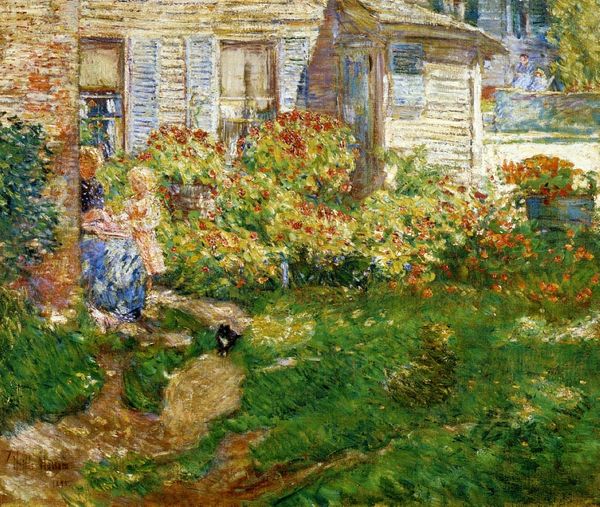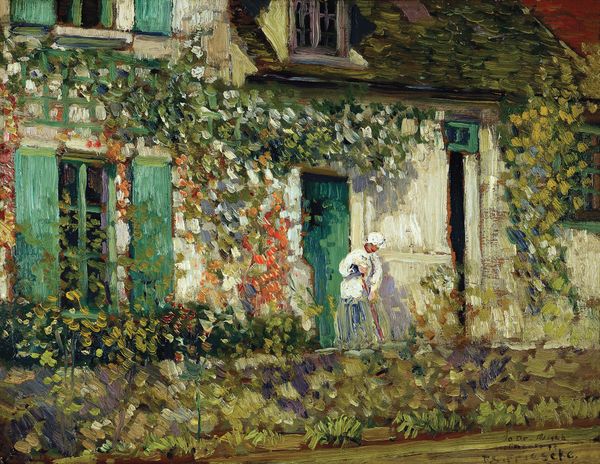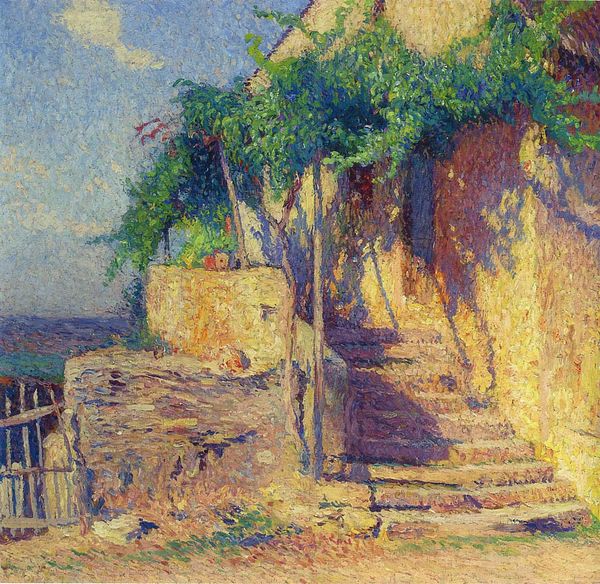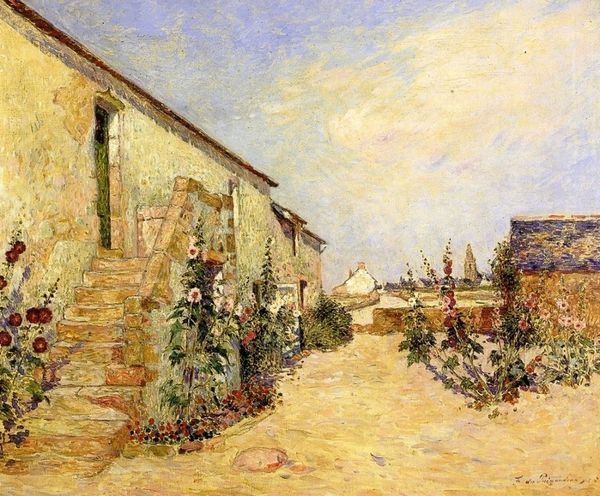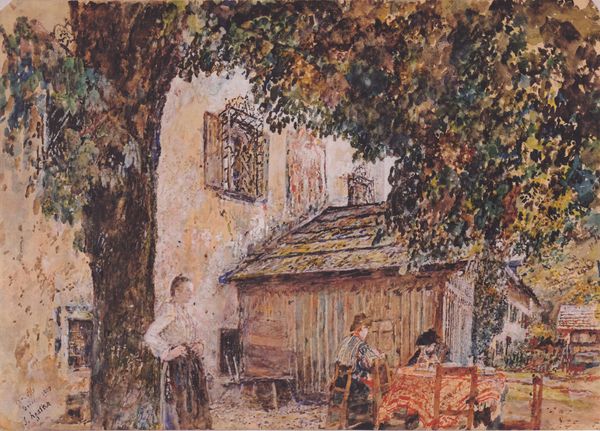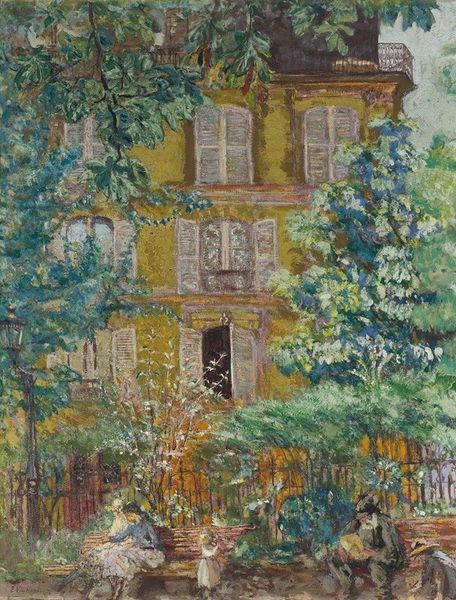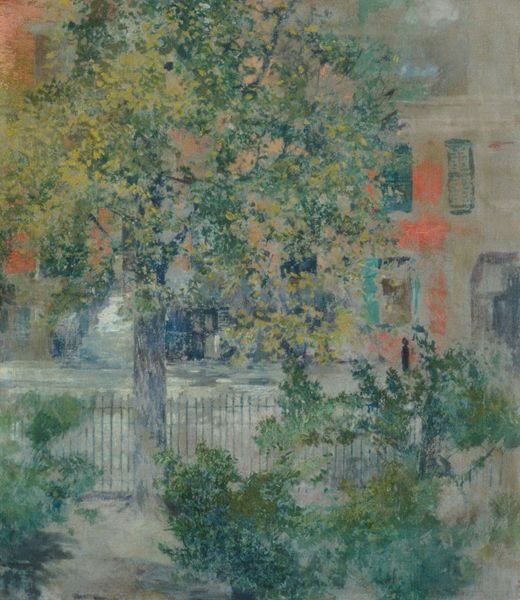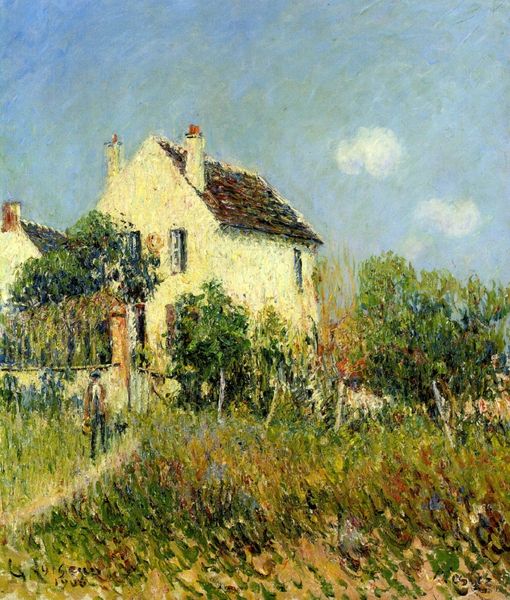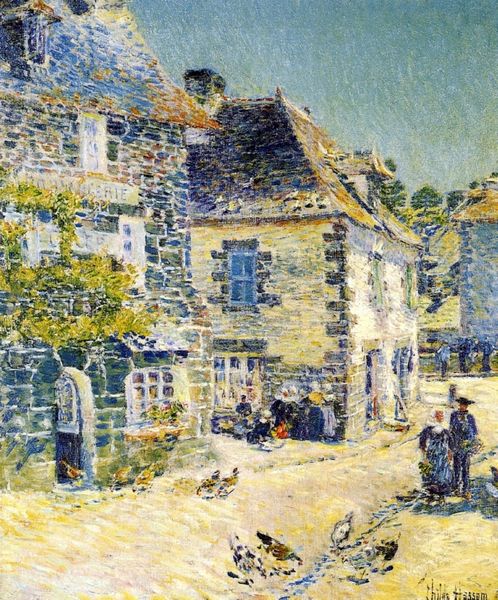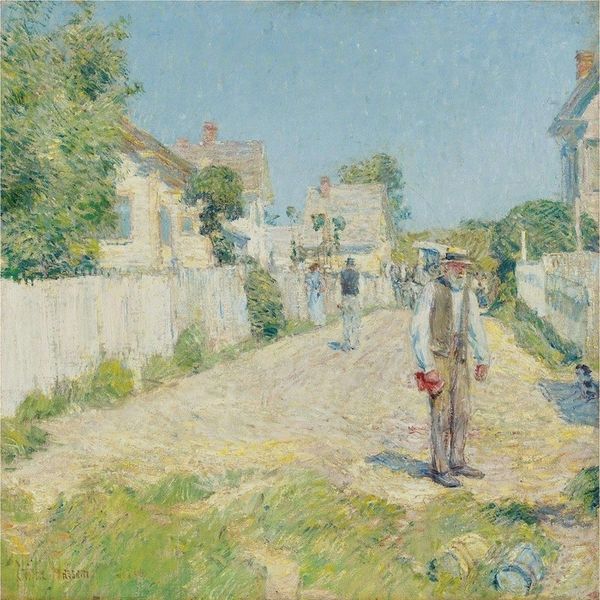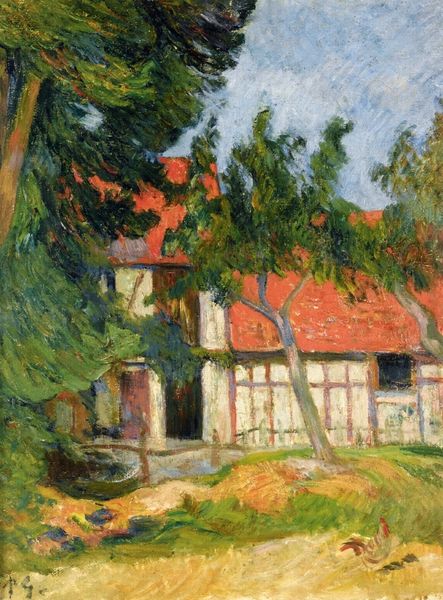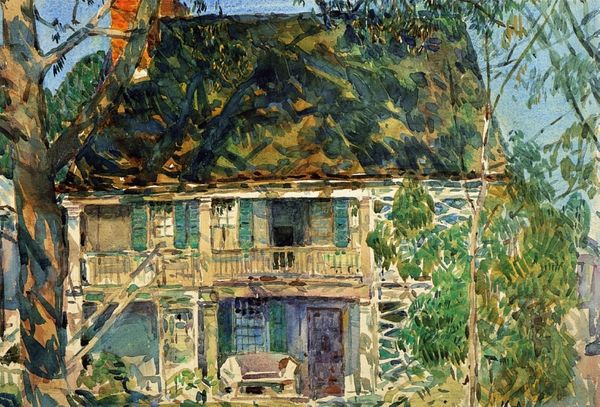
Copyright: Public domain
Editor: This is Childe Hassam’s “Provincetown Grocery Store,” painted around 1900. It feels so…ordinary, capturing a simple moment in time. What strikes me is how everyday it is, but also how light infuses everything with a kind of shimmering beauty. How do you interpret this work? Curator: It’s interesting you say ‘ordinary.’ While Hassam often depicted urban landscapes, this piece offers a glimpse into the evolving social landscape of early 20th-century America. Provincetown was becoming an artist colony at this time. Does this image reflect that, or something else? Editor: Well, I see a small town, not a bustling art scene. Maybe Hassam wanted to show the real life of Provincetown, before the artists really took over? Curator: Precisely! Consider the ‘grocery store’ itself. It speaks to the growing commercialism, even in these smaller communities. But look closer at the figures. What do you notice about them? How are they positioned in relation to the store and to each other? Editor: They seem like they're from the area…maybe just observing. The woman and child seem to need provisions; one of the workers is speaking to them. They're part of this community, this burgeoning tourist destination for some. It makes you wonder if they benefited from the artist influx. Curator: Exactly. Hassam is presenting a particular view, perhaps a nostalgic one, capturing a moment of transition. Consider also the Impressionist style—its focus on fleeting moments and the subjective experience of modern life. Did the proliferation of ‘Plein air’ Impressionism democratize the art world and inspire artists to celebrate the beauty of everyday life in a modernizing world? Editor: That's a really interesting perspective. I guess I was too quick to see it as simply pretty. Seeing the painting through the lens of social and economic changes makes me appreciate it more. It has some nuance about small town life at a turning point in American history. Curator: Indeed. Art serves as a powerful time capsule, reflecting and shaping our understanding of the past. It changes our own modern perspectives, too.
Comments
No comments
Be the first to comment and join the conversation on the ultimate creative platform.
